The climbing route I’m on is runout, and my heart is beating at what feels like a hundred miles per hour. I find a good hold and take a moment to regroup, using my breath to relax and downregulate—lowering my heart rate—as I shake out. Soon, my pulse is no longer racing. Some tricky climbing is still to come, but this moment of calm gives me mental clarity for the route ahead.
Climbing coach Justen Sjong once told me I was really good at bringing my heart rate down—something I can perhaps attribute to my yoga practice. I’ve been climbing for 21 years and practicing yoga for 19 years, and sometimes, it’s hard to separate them from one another. I see my yoga as an aid to climbing, and climbing as an aid to my yoga.
With the constant threat of a fall looming, climbing taps into your sympathetic nervous system—the fight-or-flight survival mechanism built into our brains that increases blood pressure and levels of adrenaline and the stress hormone cortisol. Yoga, on the other hand, taps into the parasympathetic nervous system—which reduces the heart rate, lowers blood pressure and helps us recover from a stressful event. Through regular practice with yoga, this downregulation is a great balance to climbing.
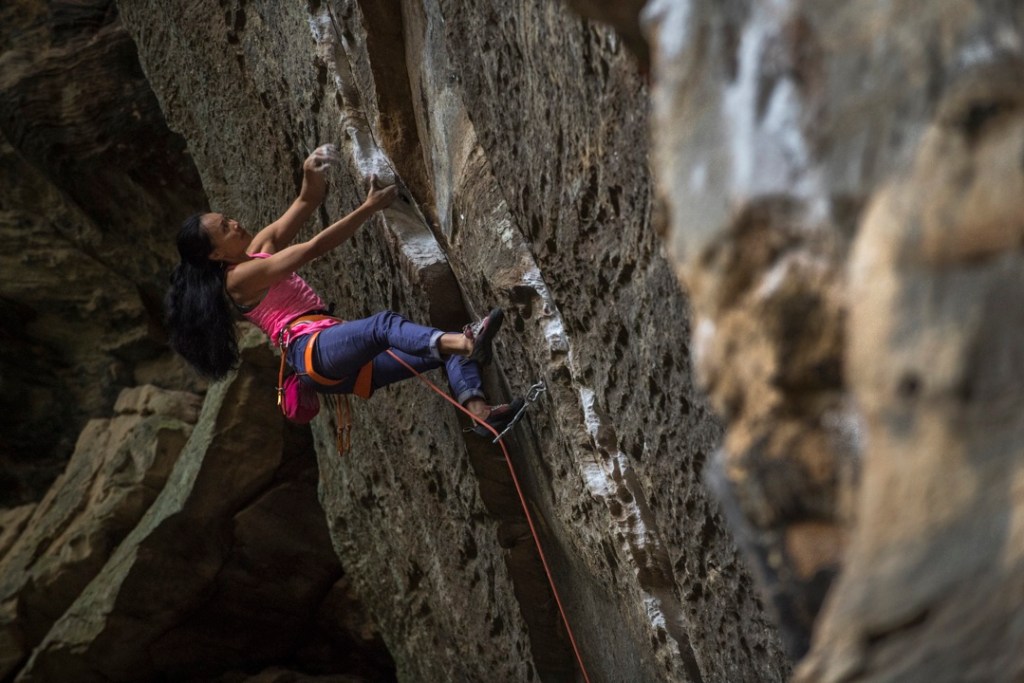
I first started climbing in college in Australia, where I joined the rock climbing club for $20. They would set up top ropes three days a week at a cliff called Kangaroo Point. Being in a new place after having moved from California to Hong Kong when I was 13, and then to Australia, I had decided to try out a bunch of different activities, but I instantly fell in love with climbing.
I climbed barefoot for the first six months because climbing shoes were too expensive for me as a student. But I remember the first time I got to the top of a 5.10, when half of the boys couldn’t get to the top. I was really blown away that skinny me—who couldn’t even do a pull up—could do what all the strong, muscular boys couldn’t. In that moment, I knew climbing was truly a unique sport.
Eventually, being super obsessed and climbing every day I could, I got injured—which is how yoga came into the picture. A friend said, “I hear yoga is good for climbing,” so I sought out a yoga class. This was 20 years ago—yoga was not the phenomenon it is today—and I had no idea what it was. I eventually found a class, and have been practicing ever since.
The moment I stepped onto the mat and did my first sun salute, I knew it was the perfect supplement to my climbing. It had the same intensity of being in the body, a self-awareness, accuracy and mindfulness in movement paired with breathing. It made so much sense that the flexibility, balance, breath awareness and strength would help my climbing.
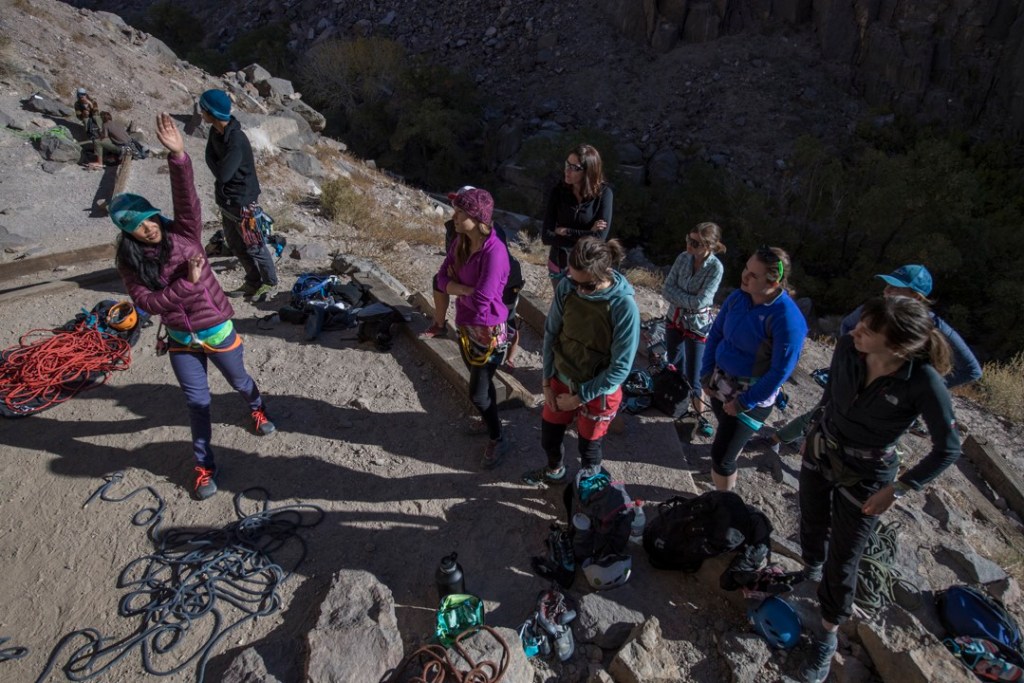
The first time I took a break from climbing while I was still doing yoga consistently, it felt like I hadn’t missed a beat when I came back to climbing, even though I had worried I’d be out of shape. I feel that yoga kept me in pretty good physical condition and increased my flexibility, so after that injury, when I started climbing again, it didn’t take long to be back where I was before. I realized some of the movements of yoga could even help counter some of the imbalances climbers sometimes develop, which can eventually lead to injury.
I never intended to teach yoga, but while I was in law school, I started to apprentice with my yoga teacher, learning in exchange for assisting, with no money changing hands. Little did I know what a gift that was, as these days people pay to take teacher trainings. I knew by my second year of law school—when I was spending my summers climbing while my classmates were grinding away in offices doing clerkships, thinking I was crazy—that law wasn’t going to be my path. I finished law school, but never really practiced.
I’ve been teaching yoga for 19 years now, and created a series of 50 classes geared to climbers on a site called yogaglo.com. I’m grateful to be able to do what I love and share it with people—whether it’s through yoga classes or at climbing clinics such as the AAC Craggin’ Classics or the yoga and climbing retreats that I’ve led.
I often hear people say, “I should do yoga,” or “I need more flexibility.” Or, “I would like to start yoga but I’m embarrassed that I won’t look good.” The thing is, we all have to start somewhere. And when you’re a beginner you’re not going to look like you know what you’re doing—just like when you started climbing. It’s good to let go of your ego and enjoy being a beginner. There is something really beautiful about learning new things for the first time and being humble and having a beginner’s mind. Also, remember: Most of the time in a yoga class, people are not just sitting around looking at you—they’re too busy trying to stay on their own mat!
Here are five of my favorite climber-friendly yoga poses:
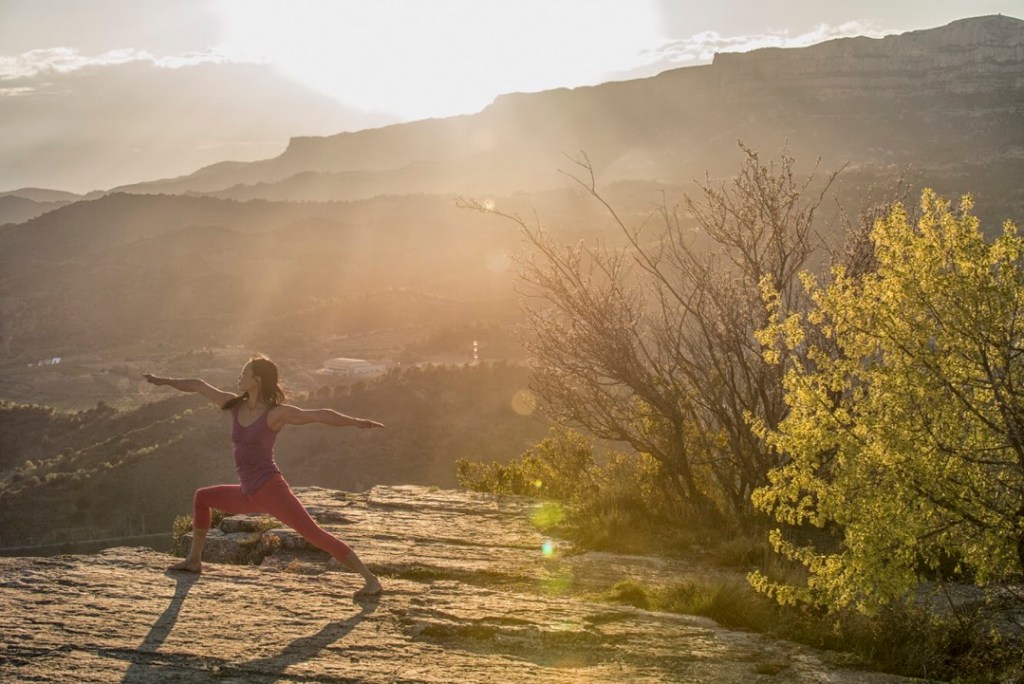
Warrior 2
This posture is great for strength and flexibility in the legs, and for proper shoulder alignment.
- Step your feet apart in a pretty wide stance. Turn your left (front) foot parallel with the mat and right (rear) foot at a 45-degree angle, slightly inward. Left and right heels should be generally aligned with one another.
- Come into a lunge, bringing your left knee over your left ankle but making sure it’s not past your knee. Keep the right leg active and strong, pressing the outer edge of the foot into the mat.
- Lift your arms out to the side, extending through your fingertips. Drop your shoulder blades down the back, drawing your shoulders away from your ears.
- Take five breaths here.
- Repeat, this time with the right foot forward.
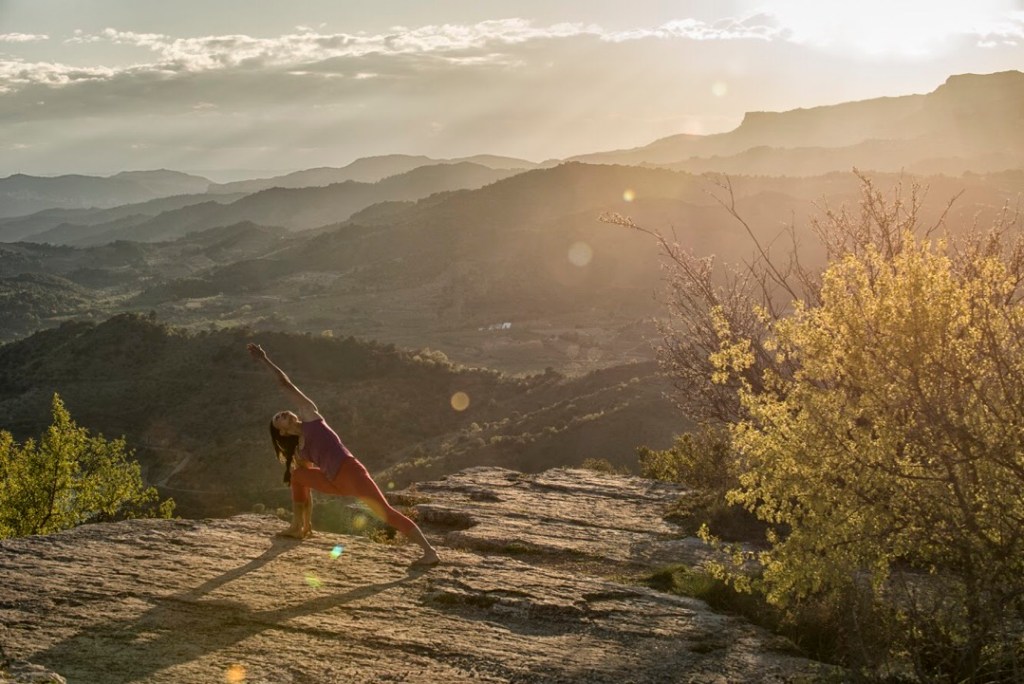
Extended side angle
From warrior 2 you can transition into this posture.
- Bring your left hand to the outside of your left foot while still in the lunge. If the ground is too far away you can use a block, placing your left hand on the block to make up the distance with the ground.
- Next, reach your right arm across your body and over your head, extending through your fingertips. You should feel a nice stretch along the right side of the body.
- Take five breaths here.
- Repeat, following warrior 2 pose on the opposite side.
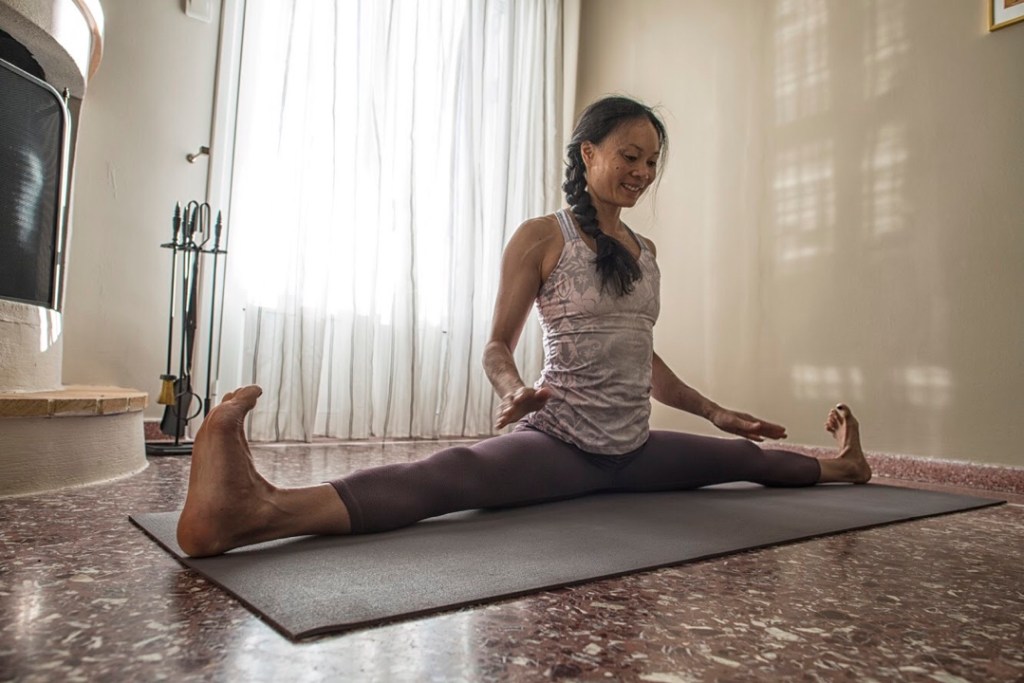
Samakanasa, or side splits
This is great to prepare for stemming climbing moves.
- From a seated position, spread your legs as wide as you can. Try reaching out through the soles of your feet. The legs should be active and engaged here.
- Take five breaths.
- Then try to shift a little bit more forward, so you’re deepening the stretch.
- Take five more breaths here.

Balasana, or child’s pose
This posture is great to stretch the arms, back and hips
- On your knees, bring your legs either hip-width apart, or you can keep your knees together, whichever is more comfortable for you.
- Bring your toes together so you’re on the tops of your shins and feet.
- Lower your hips towards your feet. If you can sit on them, great, if not, don’t worry!
- Fold forward. Reach your arms as far out in front as you can. You should feel a nice stretch in your hips, back and all along the sides of your body. Remember to take your shoulders away from your ears so you’re not shrugging your shoulders.
- Take 10 to 20 breaths here.
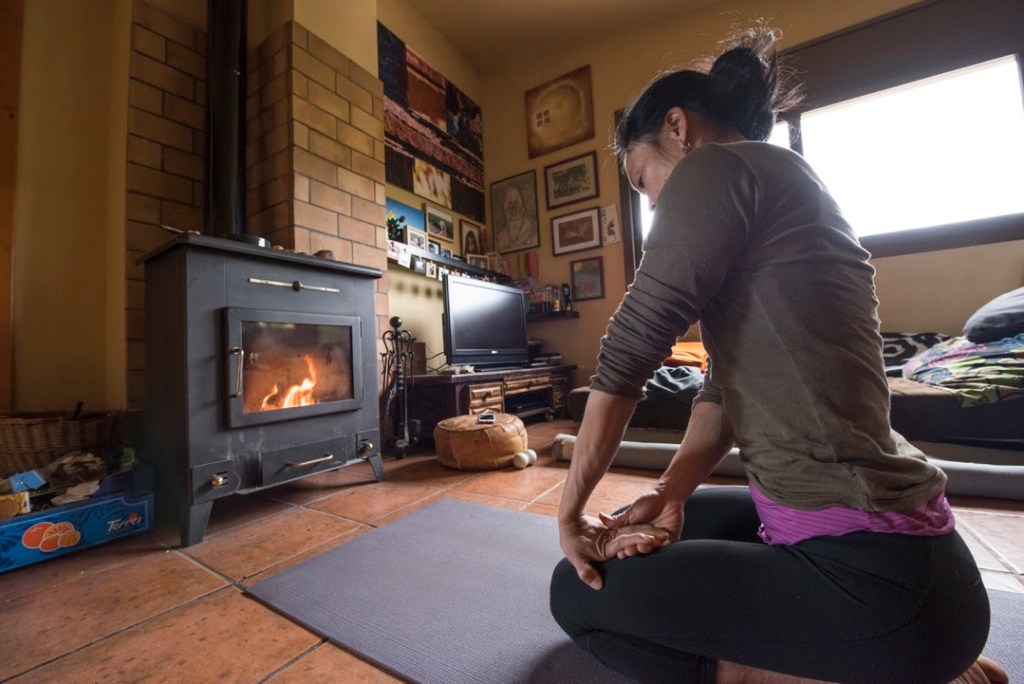
Forearm stretch
I like to throw this in because I think we often forget to do this.
- Extend your arm straight out in front of your body with the palm facing up.
- Use your other hand to gently begin to draw your fingertips down toward the ground. You can eventually place your palm on the ground or on your thigh to increase the stretch.
